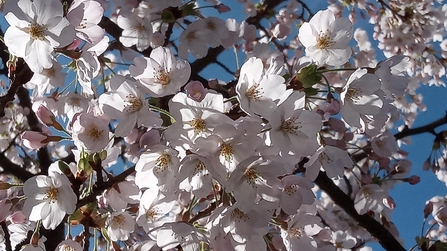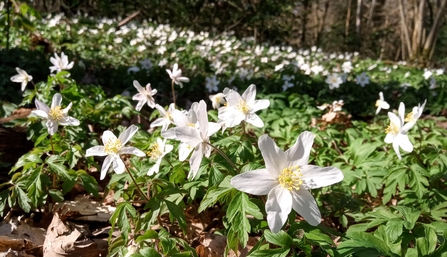Last week, on my walk towards work, I caught surprising sight of a pair of stock doves, noddily lolling on a verge outside Sydenham Hill station, and within few minutes this delight was followed by the distant bough-knocking of a great spotted woodpecker, the caws of a flurry of jackdaws, and male blackbirds chasing each other through the roadside gardens.1 Horse chestnuts had started unfurling their leaves from their mighty sticky buds, and cherry trees were in a full pinking blush, the most spectacular lining two roads in Herne Hill; south London’s very own hanami parade.2
Over the weekend, the thoughts of impending confinement clashed with the taunt and seduction of bright sky days. Luckily, keeping away from the crowds, in a woodland in south Croydon I caught site of wood anemones in their many thousands; sometimes known as windflowers these delicate 6-petalled ‘stars’ appear to emerge in breezy weather in March, but more notably they swivel to catch the sun’s light and warmth. Their presence is an indicator of ancient woodland, as they are very slow to colonise new areas, and a testimony to the resilience of nature.


